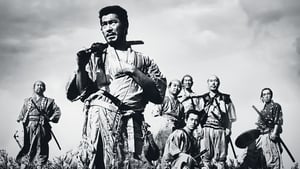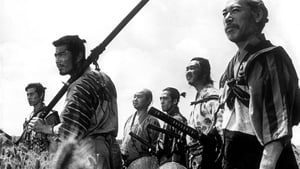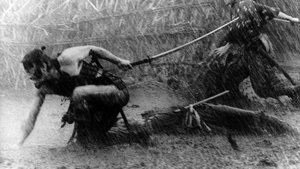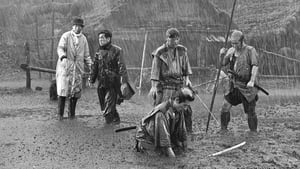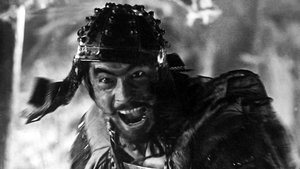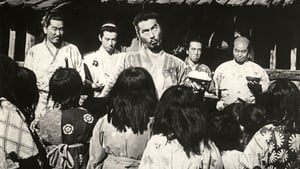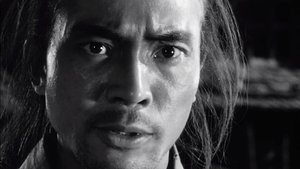Video Sources 0 Views
- Watch trailer
- Seven Samurai 1954 Colorized

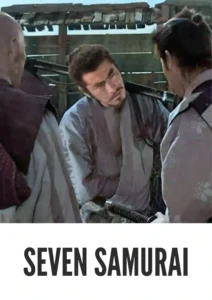
Synopsis
Table of Contents
Toggle
Step into feudal Japan with Akira Kurosawa’s Seven Samurai, an epic action saga from 1954, now beautifully colorized for a viewing experience that blends classic storytelling with modern visual appeal. This film, directed by one of cinema’s most influential auteurs, delivers a powerful narrative of courage, sacrifice, and the timeless struggle between the powerful and the vulnerable. Perfect for cinephiles and action enthusiasts alike, this HD download brings a monumental piece of film history to your screen, revitalized with color.
Seven Samurai unfolds in a 16th-century Japanese village, where desperate farmers face imminent attacks from ruthless bandits. With no resources and no hope, the villagers decide to hire samurai to protect them. They send representatives to a nearby town to recruit masterless samurai—ronin—willing to defend them in exchange for food and shelter.
The villagers manage to enlist seven samurai, each with unique skills and personalities. Led by the wise and experienced Kambei Shimada (Takashi Shimura), the samurai include the skilled swordsman Kyuzo (Seiji Miyaguchi), the cheerful Heihachi Hayashida (Minoru Chiaki), and the young, ambitious Katsushiro Okamoto (Isao Kimura). Among them is Kikuchiyo (Toshiro Mifune), a boisterous and eccentric character who, despite initially appearing as a mere braggart, proves to be a fierce and invaluable warrior.
As the samurai prepare the village for the impending attack, they teach the farmers how to defend themselves, fortify the village, and strategize for the battle. The ensuing conflict is a brutal and intense clash between the samurai, the villagers, and the bandits, showcasing incredible swordplay, tactical warfare, and poignant moments of human connection. In the end, the surviving samurai reflect on their victory, realizing that the true winners are the farmers who will continue to cultivate the land. Seven Samurai is a profound exploration of honor, duty, and the enduring spirit of humanity in the face of adversity.
The film boasts an extraordinary ensemble cast who bring depth and authenticity to this epic tale:
-
Toshiro Mifune as Kikuchiyo
-
Takashi Shimura as Kambei Shimada
-
Seiji Miyaguchi as Kyuzo
-
Yoshio Inaba as Gorobei Katayama
-
Minoru Chiaki as Heihachi Hayashida
-
Daisuke Katō as Shichiroji
-
Isao Kimura as Katsushiro Okamoto
Seven Samurai transcends traditional genre classifications, but it is best described as an epic action saga with elements of drama, war, and historical fiction. Its sweeping scope, complex characters, and profound themes make it a cinematic masterpiece.
Released in 1954, Seven Samurai is a landmark achievement in Akira Kurosawa’s career and a pivotal work in the history of Japanese cinema. The film was produced during a period of significant social and cultural change in post-war Japan. Kurosawa’s innovative techniques, including dynamic camera work and meticulous attention to detail, revolutionized filmmaking and influenced countless directors worldwide. Seven Samurai not only solidified Kurosawa’s reputation as a visionary director but also brought Japanese cinema to international acclaim, paving the way for future generations of filmmakers.
This colorized version of Seven Samurai has been meticulously restored using modern digital techniques, enhancing the visual appeal while preserving the film’s original atmosphere of intensity and drama. The colorization process involved carefully analyzing the grayscale tones of the original black and white footage and assigning appropriate colors to each scene. While the specific software used remains proprietary, the techniques employed included advanced algorithms for color palette selection and image enhancement. This painstaking process brings new life to the characters and settings, making the story even more immersive for modern audiences. While some may debate the merits of colorizing classic films, it introduces these films to a broader audience, ensuring their legacy for future generations.
-
: Akira Kurosawa
-
: Akira Kurosawa, Shinobu Hashimoto, Hideo Oguni
-
: Asakazu Nakai
-
: Kôichi Kawakita
-
: Toho
-
: Toho
-
: 207 minutes
-
: MP4
-
: HD (1080p)
-
: Compatible with most devices, including smartphones, tablets, computers, and smart TVs.
Seven Samurai (1954) is widely regarded as one of the greatest films ever made, celebrated for its groundbreaking storytelling, compelling characters, and stunning action sequences. Its influence can be seen in countless films, from Westerns like The Magnificent Seven to modern action blockbusters. As a timeless masterpiece, Seven Samurai continues to inspire and captivate audiences around the world.
-
: What is Seven Samurai about?
-
A: Seven Samurai tells the story of a group of samurai hired to protect a village from bandits in feudal Japan.
-
-
: Is Seven Samurai (1954) considered a classic film?
-
A: Yes, Seven Samurai is universally recognized as a cinematic masterpiece and one of the most influential films ever made.
-
-
: Is this version of Seven Samurai colorized?
-
A: Yes, this version has been professionally colorized to enhance the viewing experience.
-
-
: What makes Seven Samurai so important in film history?
-
A: Seven Samurai revolutionized filmmaking with its innovative techniques, complex characters, and profound themes, influencing countless directors and shaping the action genre.
-
-
: What is the download format?
-
A: The download format is MP4, which is compatible with most devices.
-
-
: What resolution is the download?
-
A: The resolution is HD (1080p), providing a high-quality viewing experience.
-
Watch Seven Samurai Today!
